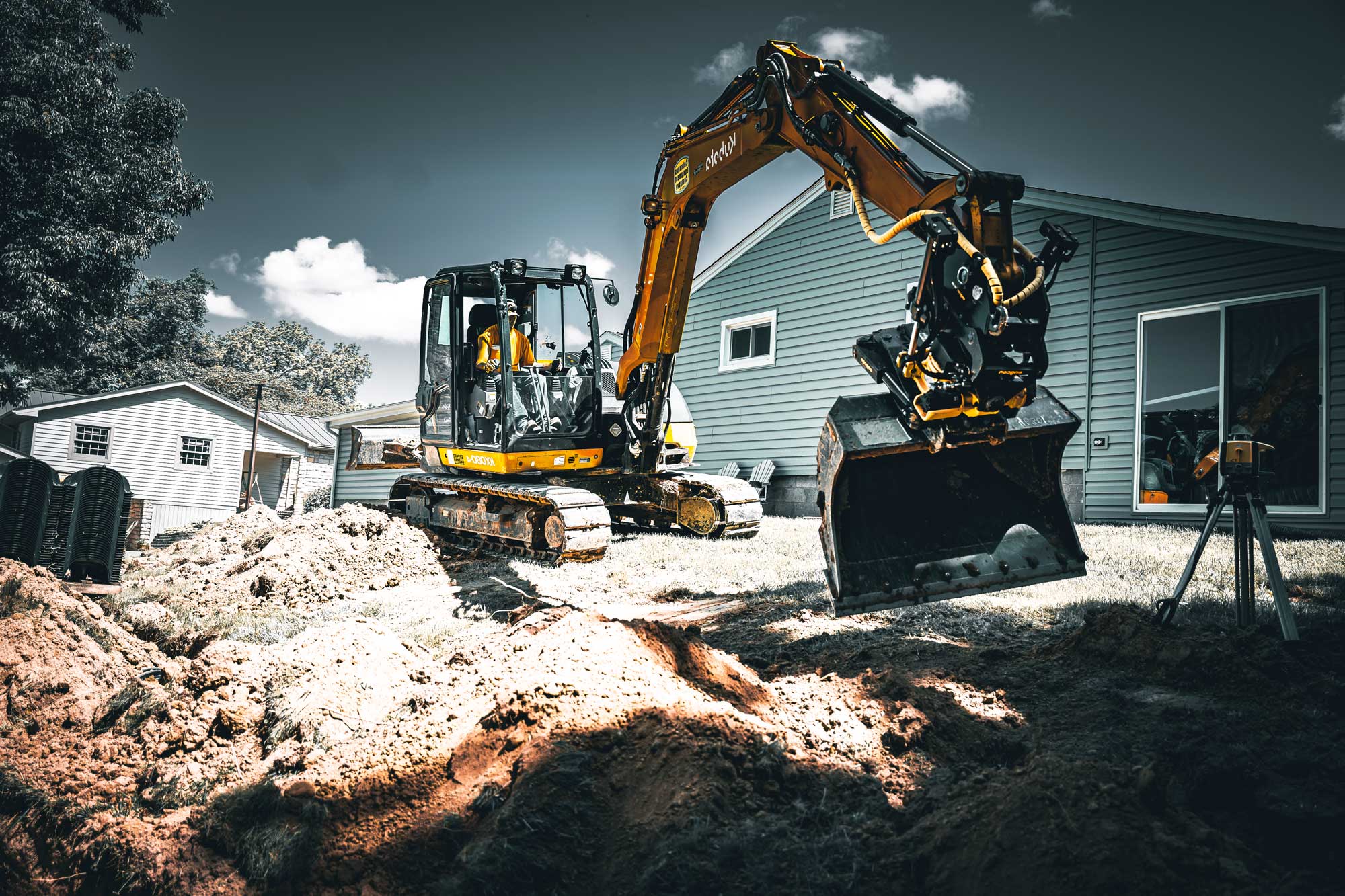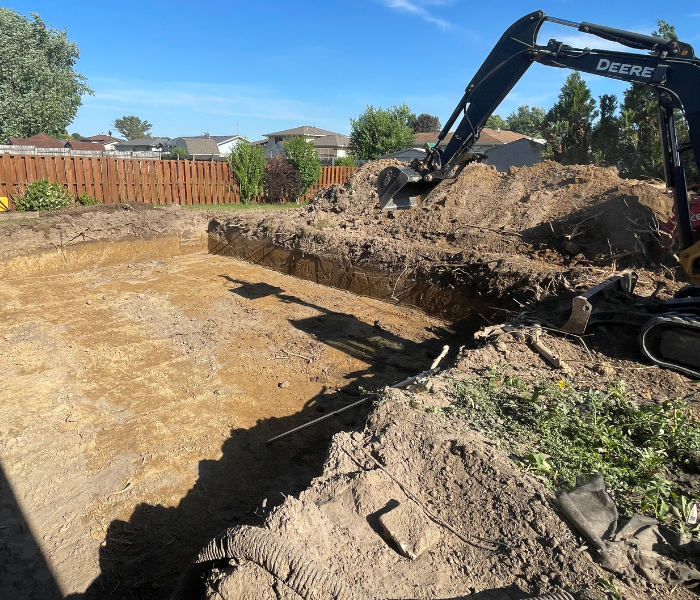Lancaster Excavation - Expert Excavation Services in Lancaster, OH
Lancaster Excavation - Expert Excavation Services in Lancaster, OH
Blog Article
Introducing the Art of Excavation: Pro Tips for Safe and Effective Excavating
As soil is transformed and earth is relocated, the complexities of excavation disclose themselves, demanding a keen understanding of equipment, soil make-up, safety procedures, and ecological considerations. The experience required to navigate these aspects properly can suggest the difference in between a successful excavation task and a prospective catastrophe.
Significance of Proper Tools
To guarantee the security and performance of any type of excavation job, using the ideal equipment is paramount. The right tools not just boost productivity but also alleviate threats related to digging. Excavation projects vary in range and intricacy, varying from little residential landscaping jobs to massive building endeavors. Despite the task size, having the correct equipment can make a significant difference in the end result.
These functional devices come in numerous dimensions to fit different task demands. Mini excavators are ideal for smaller sized tasks, while larger excavators take on much more extensive tasks effectively.
Apart from excavators, various other vital devices includes dump vehicles, trenchers, and excavators. Dump vehicles are important for getting rid of and transporting excavated products, while trenchers are used for excavating narrow and deep trenches. Bulldozers master jobs that need pushing huge quantities of dirt or particles. By buying the ideal equipment, excavation tasks can be completed safely, on time, and with precision.
Understanding Soil Structure
A comprehensive grasp of soil make-up is fundamental for performing excavation jobs with accuracy and safety. Comprehending the various kinds of soil is important as it straight influences excavation techniques, tools selection, and overall project efficiency. Soil structure commonly consists of four main components: sand, silt, clay, and raw material. Each element has special residential properties that influence exactly how soil reacts to excavation processes.
Silt particles are smaller than sand but larger than clay, using moderate water drainage and communication. Organic issue, such as rotting plant product, impacts dirt fertility and security.
Before commencing excavation, carrying out soil tests to identify its make-up and features is crucial. This info helps in picking the proper equipment, applying precaution, and establishing excavation techniques customized to the certain dirt problems - lancaster trenching. By recognizing soil make-up, excavation professionals can boost project outcomes while ensuring security and adherence to best practices
Precaution and Procedures
Recognizing dirt structure is the foundation upon which safety and security measures and protocols for excavation jobs are constructed, guaranteeing the health of workers and the success of the venture. When it comes to safety and security during excavation, there are several crucial steps that need to be implemented to reduce threats and stop mishaps.
Firstly, prior to any excavating begins, a complete evaluation visit this page of the website must be conducted to determine any kind of potential dangers such as underground utilities, unpredictable dirt problems, or neighboring frameworks that can posture a threat. It is essential to have a qualified individual look after the excavation procedure to make certain that all safety and security methods are adhered to purely.
Furthermore, all workers involved in the excavation has to be properly learnt risk-free digging practices and the appropriate procedure of tools. Personal protective devices (PPE) such as construction hats, high visibility clothing, gloves, and security boots need to be worn whatsoever times to lessen the threat of injuries. excavating ohio. Routine safety meetings and toolbox talks ought to likewise be carried out to keep all workers notified regarding prospective risks and strengthen risk-free work methods. By adhering to these security steps and protocols, excavation projects can be completed effectively and without event.
Reliable Excavation Planning
When beginning on an excavation task, careful preparation is necessary to ensure performance, safety, and effective outcomes. Efficient excavation preparation includes numerous essential actions that are essential for the smooth implementation of the project.
When the website assessment is total, the following step is to produce a clear timeline and routine for the excavation tasks. This includes establishing the sequence of jobs, equipment demands, and workforce appropriation. Appropriate organizing aids avoid delays and ensures that the task remains on track.

Furthermore, communication amongst all staff member is paramount throughout the preparation stage. Clear regulations, routine updates, and efficient sychronisation are necessary for an effective excavation job. By spending effort and time in careful preparation, excavation groups can dramatically improve productivity, reduce risks, and achieve successful end results.

Handling Environmental Factors To Consider
With raising focus on environmental sustainability in building and construction techniques, managing ecological considerations has come to be a crucial element of excavation projects. Excavation tasks have the prospective to impact the surrounding setting view it with dirt erosion, debris overflow, environment interruption, and contamination of water resources. To reduce these threats, it is necessary to execute ideal practices that focus on environmental security.
In addition, correct waste monitoring is crucial to avoid soil and water contamination. Executing treatments for the disposal of harmful materials, recycling of waste products, and decreasing using hazardous chemicals can considerably lower the environmental influence of excavation jobs. By integrating these methods right into excavation preparation and implementation, review building business can ensure that their projects are not just risk-free and productive but additionally eco accountable.
Conclusion
To conclude, understanding the art of excavation needs a detailed understanding of appropriate devices, soil make-up, precaution, and effective planning. By adhering to these standards and considering ecological elements, excavations can be conducted securely and effectively. It is essential to prioritize safety and performance in every digging job to guarantee effective results.
As dirt is turned and planet is moved, the details of excavation expose themselves, demanding an eager understanding of tools, soil make-up, security methods, and environmental considerations.To make sure the safety and performance of any excavation task, utilizing the ideal devices is extremely important.A detailed understanding of soil make-up is fundamental for implementing excavation jobs with precision and safety and security. Comprehending the different kinds of soil is essential as it straight affects excavation methods, devices option, and general project effectiveness. By understanding soil make-up, excavation professionals can improve task outcomes while making sure safety and security and adherence to best methods.
Report this page